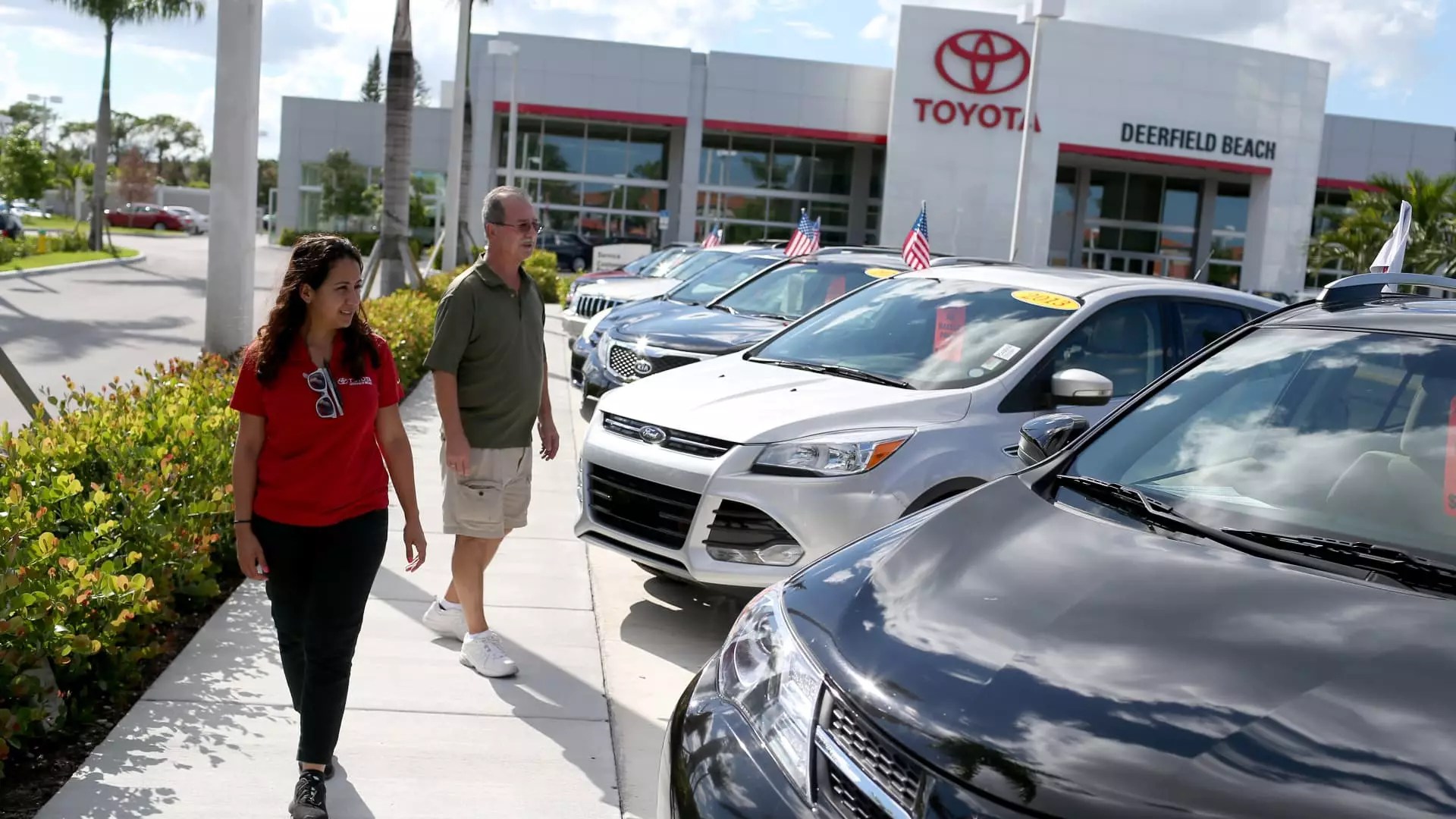The American automotive industry is on the brink of a significant upheaval, fueled by President Donald Trump’s recent 25% tariffs on imported vehicles and parts. Analysts from the renowned automotive data firm Cox Automotive predict that these tariffs will not just affect the sales figures and pricing structures of new vehicles, but will send shockwaves through the entire economy, undeniably altering how Americans purchase and value cars. This analysis unveils the harsh realities we face in the automotive sphere, emphasizing critical shifts in consumer behavior and potential consequences on the market at large.
The Roller Coaster Ride of the Automotive Market
The current state of the automotive industry has been aptly described as a “roller coaster ride” by industry experts. Jonathan Smoke, the Chief Economist at Cox Automotive, highlights the volatility in auto demand as consumers grapple with economic uncertainties. The prices of both new and used vehicles are poised to ascend, thrusting many American families into a buying quandary they had not expected. The expectation of a $6,000 increase for imported vehicles, paired with a $3,600 rise for domestically assembled models due to these tariffs, creates a daunting financial landscape for potential buyers.
Traditionally, a surge in vehicle prices would spur consumers to adapt by seeking more economical options, primarily used cars. Yet, in today’s environment, the indirect repercussions of tariffs will also catalyze higher prices for the used vehicles that so many Americans rely on. The market is reshaping itself amidst shaky supply chains and fluctuating consumer confidence. Thus, the question arises: is it time for policymakers to reassess the wisdom behind these tariffs?
Impacts on Used Vehicle Pricing
Despite tariffs applying primarily to new vehicles, the used market is not sheltered from the storm. Cox Automotive projects a significant uptick in wholesale used vehicle prices, expected to rise by as much as 2.8% by the year’s end. This increase is deeply rooted in the supply-demand equation, influenced directly by how the new vehicle market is performing, which is intrinsically tied to national economic conditions.
The average listing price hovering around $25,000 underscores a troubling trend for average American consumers who view vehicle ownership as a fundamental necessity. The expectation that used car prices may escalate in tandem with new car prices indicates a tightening grip on affordable mobility. With inflationary pressures driving prices upwards, the fear that car ownership could slip beyond the reach of median-income families becomes a prevalent concern, as the principle of supply and demand seemingly overrides any attempts at stabilization in pricing.
Automaker Strategies Amid Tariffs
Automakers are scrambling to find effective responses to the shifting landscape. While some established American companies like Ford and Stellantis are rolling out temporary deals to maintain consumer interest, others, including foreign manufacturers like Jaguar Land Rover, are ceasing U.S. shipments altogether. Such divergent strategies reflect a broader strategy to hedge against potential losses while navigating the tariffs.
The automotive sector’s resilience will thus be put to the test. The expectation of declining production outputs will bring challenges that impact vehicle availability on dealer lots, which in turn modifies consumer expectations and timelines for purchases. Understanding this dynamic is critical; as less new inventory becomes available, prices inevitably climb, engendering a feedback loop that could push the entire marketplace into a tailspin.
The Corporate Burden of Cost Increases
While automakers might entertain the idea of absorbing some of the tariff-inflicted cost burdens, observations suggest that the industry will ultimately shift these costs down to the consumer. This is particularly concerning for businesses focused on mass market appeal. The looming question is whether companies will prioritize consumer satisfaction or their bottom line as pressure mounts to maintain profits with rising operational costs.
With used vehicles becoming increasingly difficult to source, dealers like Ryan Rohrman of Rohrman Automotive Group express their concerns over the intrinsic volatility facing both new and used car markets. As prices and demand fluctuate, dealers may feel compelled to expand their auction activities to fulfill inventory gaps, mirroring patterns witnessed during the tumultuous pandemic period.
The Uncertain Road Ahead
The outlook for the American automotive industry is murky at best. In the wake of tariffs and a shifting consumer base, automakers may face a dilemma between cutting production and sustaining demand. However, the impact of tariffs and increasing prices raises doubt about sustaining growth in such a climate. Without swift action from policymakers to rethink and recalibrate these tariffs, American consumers may be staring down a reality where car ownership slips further from their grasp—a sobering consideration that underscores the urgency for balanced trade dialogue.
In summation, the automobile landscape is set to transform dramatically under the weight of these tariffs, steering the industry toward a potentially dystopian reality for consumers. While automakers and analysts fret over “declining discounting and escalating price increases,” one must wonder: who will ultimately bear the burden of these decisions? The consumers—ordinary Americans—are already feeling the pressure, caught in a tug-of-war between political ideals and everyday financial realities.


Leave a Reply